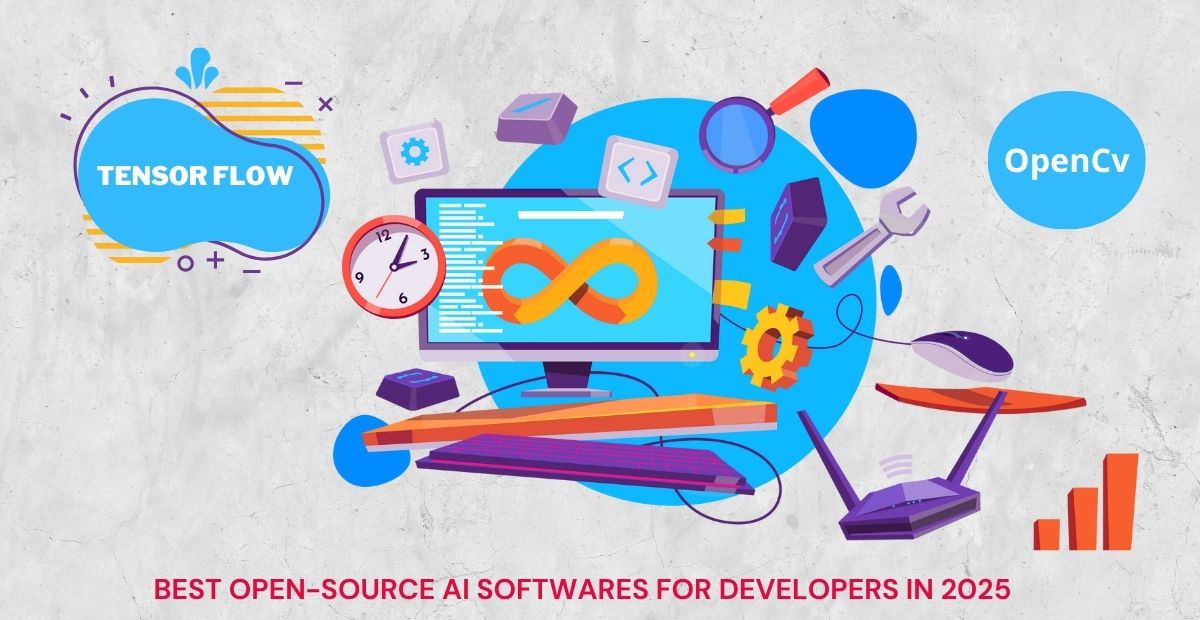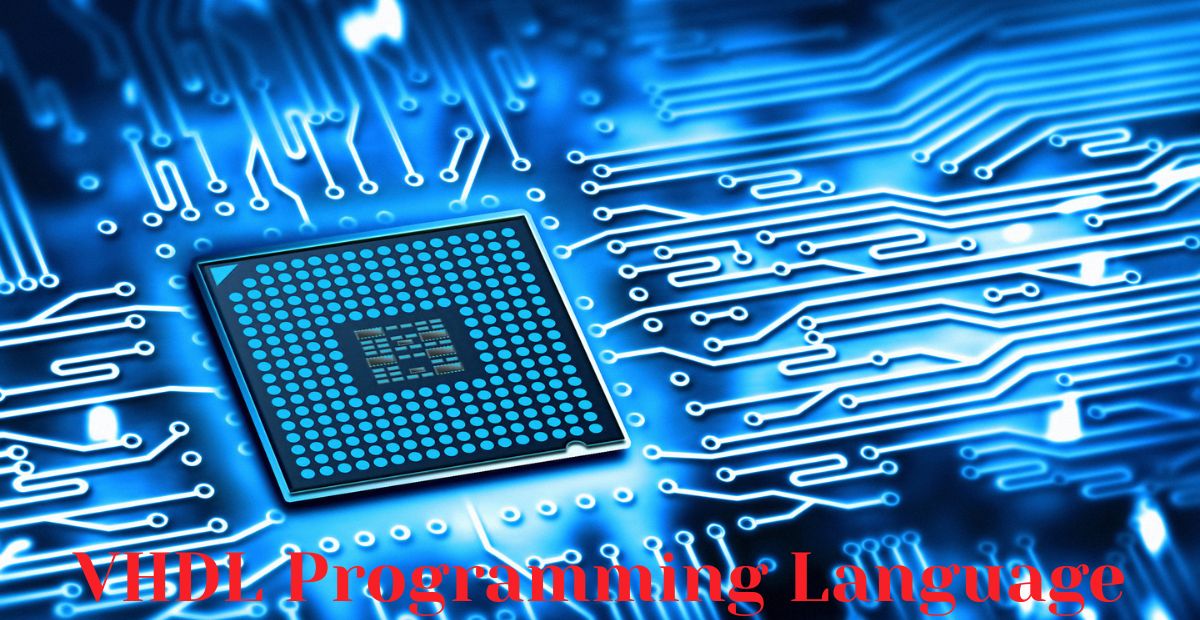Introduction
artificial intelligence (AI) is transforming industries worldwide, from healthcare diagnostics to financial forecasting, with developers playing a key role in driving these innovations. Open-source AI software empowers developers to build, customize, and deploy AI models without hefty licensing fees.
In this blog, we’ll explore the best open-source AI software for developers in 2024. Whether you’re into machine learning (ML), natural language processing (NLP), computer vision, or deep learning, this list has something for you.
Why Use Open-Source AI Software?
Before diving into the tools, let’s understand why open-source AI a game-changer is:
- Cost-Effective – No expensive licenses; free to use and modify.
- Community Support – with developers worldwide collaborating to enhance its features and functionality.
- Customization – Modify the code to fit your project needs.
- Transparency – Open-source means no hidden algorithms or biases (if audited).
- Cutting-Edge Tech – Access to the latest AI advancements.
Now, let’s explore the top open-source AI tools developers should know in 2025.
1. TensorFlow
Google created the open-source machine learning (ML) framework TensorFlow to make the process of building, honing, and implementing AI models easier. Used by researchers, developers, and enterprises worldwide, TensorFlow accelerates deep learning, neural networks, and data-driven decision-making with unmatched scalability.
Key Features:
- Supports CPU, GPU, and TPU acceleration
- Keras integration for simplified model building
- TensorFlow Lite for mobile & edge devices
- TensorFlow.js for browser-based AI
Use Cases:
- Image and speech recognition
- Predictive analytics
- Autonomous vehicles
2. PyTorch
PyTorch is an open-source machine learning (ML) library developed by Facebook’s AI Research Lab (FAIR), renowned for its dynamic computation graphs and Python-first approach. Dominating research and industry adoption, PyTorch enables seamless prototyping to production for neural networks and AI applications.
Key Features:
- Dynamic computation graphs (easier debugging)
- Strong GPU acceleration support
- TorchScript for production deployment
- Integrates with ONNX, Hugging Face, and FastAI
Use Cases:
- Academic research
- Reinforcement learning
- Generative AI models (like GANs)
3. Hugging Face Transformers
An open-source Python package called Hugging Face Transformers offers cutting-edge natural language processing (NLP) models like as T5, BERT, and GPT. Used by Google, Microsoft, and startups alike, it simplifies deploying pretrained AI models for tasks like text generation, translation, and sentiment analysis with just a few lines of code
Key Features:
- Pre-trained models for translation, summarization, and chatbots
- Easy fine-tuning with PyTorch & TensorFlow
- Model Hub with thousands of community-shared models
Use Cases:
- Chatbots (like ChatGPT alternatives)
- Sentiment analysis
- Text generation
4. OpenCV
OpenCV (Open Source Computer Vision Library) is the world’s most popular open-source computer vision and machine learning software. Used by companies like Google, Intel, and Tesla, it provides 2,500+ optimized algorithms for real-time image/video processing, AI model deployment, and robotics.
Key Features:
- Face detection & object recognition
- Supports C++, Python, and Java
- AI-powered image enhancement
- Real-time video analysis
Use Cases:
- Facial recognition systems
- Augmented reality (AR) apps
- Medical image analysis
5. Scikit-learn
The industry-leading open-source Python machine learning framework, Scikit-learn, is based on Matplotlib, NumPy, and SciPy. Trusted by startups and Fortune 500 companies alike, it provides simple yet powerful tools for predictive data analysis making ML accessible to everyone from students to AI engineers.
Key Features:
- Classification, regression, clustering algorithms
- Easy integration with NumPy & Pandas
- Model evaluation tools (cross-validation, metrics)
Use Cases:
- Fraud detection
- Customer segmentation
- Predictive maintenance
6. LangChain
LangChain is an open-source Python/JavaScript framework that simplifies building production-ready applications with large language models (LLMs) like GPT-4, Claude, and Llama 2.
Used by AI startups and enterprises, it solves key LLM challenges memory, data grounding, and tool integration with modular components.
Key Features:
- Chains, agents, and memory for complex workflows
- Supports OpenAI, Anthropic, and open-source LLMs
- Document loaders & vector databases for RAG (Retrieval-Augmented Generation)
Use Cases:
- AI-powered search engines
- Automated customer support
- Knowledge base chatbots
7. Rasa
Rasa is the leading open-source conversational AI platform for creating context-aware chatbots and voice assistants that truly understand users. Unlike rule-based tools, Rasa uses machine learning (NLU & dialogue management) to handle complex, dynamic conversations deployed on your infrastructure for full data control.
Key Features:
- NLU (Natural Language Understanding) engine
- Dialogue management without rigid rules
- On-premises deployment (no vendor lock-in)
Use Cases:
- Customer service automation
- Voice assistants
- Enterprise chatbots
8. Apache MXNet
High-performance, open-source deep learning framework Apache MXNet was created with flexibility and efficiency in mind. Backed by Amazon Web Services (AWS) and used by companies like Intel and Microsoft, MXNet excels in distributed training and deployment of neural networks across multiple GPUs and servers.
Key Features:
- Multi-GPU & distributed training
- Flexible programming (imperative & symbolic)
- Cloud integration with AWS
Use Cases:
- Large-scale AI deployments
- Recommendation systems
- Speech recognition
9. FastAI
FastAI is an open-source deep learning library built on top of PyTorch, designed to make state-of-the-art AI accessible to developers, researchers, and businesses. Known for its “top-down” teaching approach, FastAI enables rapid prototyping and deployment of computer vision, NLP, and tabular data models with minimal code.
Key Features:
- Easy-to-use APIs for quick prototyping
- Best practices built-in
- Great for education & rapid experimentation
Use Cases:
- Image classification
- Medical diagnostics
- Financial forecasting
10. Jupyter Notebooks
With Jupyter Notebooks, an open-source web tool, you can create and distribute documents with narrative text, equations, live code, and visualizations. Widely used by data scientists, researchers, and educators, it supports Python, R, Julia, and 40+ other languages for seamless data analysis, machine learning, and scientific computing.
Key Features:
- Interactive Python, R, and Julia coding
- Visualizations & markdown support
- Cloud-based & shareable
Use Cases:
- AI research documentation
- Data analysis & visualization
- Collaborative ML projects
Comparison Table: Best Open-Source AI Software
| Tool | Best For | Language | License |
| TensorFlow | Deep Learning | C++, Python | Apache 2.0 |
| PyTorch | Research & Flexibility | Python | BSD |
| Hugging Face | NLP & LLMs | Python | Apache 2.0 |
| OpenCV | Computer Vision | C++, Python | BSD |
| Scikit-learn | Traditional ML | Python | BSD |
| LangChain | LLM Applications | Python | MIT |
| Rasa | Chatbots | Python | Apache 2.0 |
| Apache MXNet | Scalable AI | Python, C++ | Apache 2.0 |
| FastAI | Beginner-Friendly DL | Python | Apache 2.0 |
| Jupyter Notebooks | AI Experimentation | Python, R | BSD |
How to Choose the Right Open-Source AI Tool?
- Define Your Project Needs – NLP, vision, or general ML?
- Check Community & Documentation – Active support matters.
- Evaluate Performance – Some tools are faster on GPUs.
- Consider Deployment – Cloud, mobile, or edge?
- Test Flexibility – Can you customize it easily?
Future Trends in Open-Source AI
- More LLM Innovations – Expect better open-source alternatives to ChatGPT.
- AI on Edge Devices – Faster, lightweight models for IoT.
- Ethical AI Tools – More transparency and bias mitigation.
Conclusion
Open-source AI software is democratizing AI development, allowing anyone to build powerful applications. Whether you’re a beginner or an expert, tools like TensorFlow, PyTorch, Hugging Face, and OpenCV provide the foundation for innovation.
FAQs About Open-Source AI Software
Is open-source AI software really free?
Which is better for beginners: TensorFlow or PyTorch?
- TensorFlow is great if you want production-ready models and integration with Google’s ecosystem.
- PyTorch is more beginner-friendly due to its dynamic computation graph (easier debugging).
- For absolute beginners, FastAI (built on PyTorch) is the easiest way to start.
Can I use these tools for commercial projects?
- Check the specific license (e.g., Apache 2.0 is business-friendly).
- Some pretrained models (like GPT-3) may have restrictions.
How do I contribute to open-source AI projects?
- Report bugs on GitHub.
- Submit code improvements via pull requests.
- Write documentation or tutorials.
- Donate to projects like OpenCV or Hugging Face.
What’s the best open-source alternative to ChatGPT?
- Llama 2 (Meta)
- Mistral 7B
- Falcon 180B
- GPT-J (EleutherAI)
- Use LangChain or LlamaIndex to integrate them into apps.
Which tool is best for real-time computer vision?
- Face detection
- Object tracking
- Augmented reality
- For deep learning-based vision, use TensorFlow Lite or PyTorch with TorchVision.
Do I need a GPU to run these AI tools?
- For small models (Scikit-learn, basic NLP), a CPU is enough.
- For deep learning (TensorFlow, PyTorch), a GPU (NVIDIA CUDA) drastically speeds up training.
- Free cloud options: Google Colab, Kaggle GPUs.
How do I deploy an open-source AI model?
- Docker containers (for scalability).
- ONNX runtime (for cross-platform compatibility).
- TensorFlow Serving or FastAPI (for REST APIs).
- Hugging Face Inference API (for easy cloud hosting).
Are there open-source AI tools for mobile apps?
- TensorFlow Lite (Android/iOS).
- PyTorch Mobile.
- ML Kit (Firebase) for lightweight models.
What’s the future of open-source AI?
- Smaller, faster models (like TinyML).
- Ethical AI tools (bias detection, explainability).
- Open-source LLMs rivaling proprietary ones.
“Want to explore open-source AI tools?
Stay updated with the latest developments in AI frameworks, libraries, and community projects by following Infinity Logic for regular insights!”





